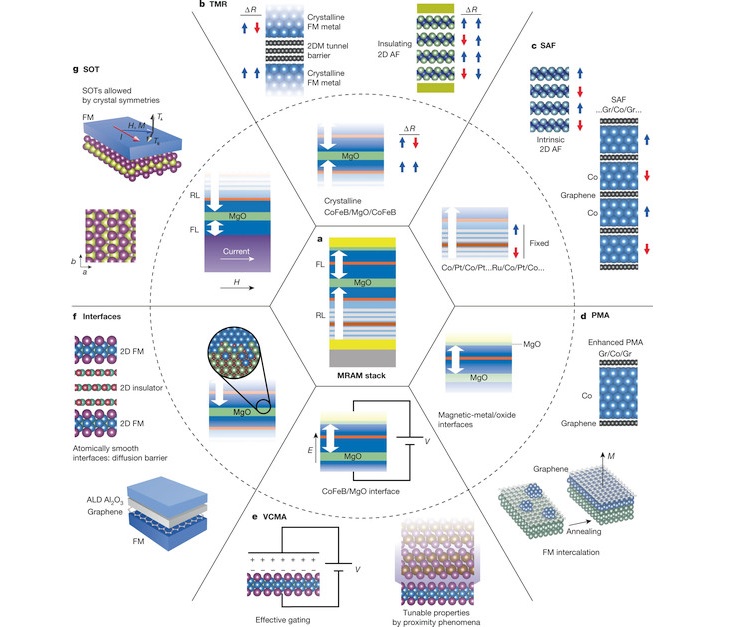H. Yang✉, S. O. Valenzuela✉, M. Chshiev, S. Couet, B. Dieny, B. Dlubak, A. Fert, K. Garello, M. Jamet, D.-E. Jeong, K. Lee, T. Lee, M.-B. Martin, G. S. Kar, P. Sénéor, H.-J. Shin, S. Roche✉, Nature 606, 663 (2022).

In this Perspective article, an overview of the current developments and challenges in regard to MRAM are provided and the opportunities that can arise by incorporating two-dimensional material technologies are outlined.
Non-volatile magnetic random-access memories (MRAMs), such as spin-transfer torque MRAM and next-generation spin–orbit torque MRAM, are emerging as key to enabling low-power technologies, which are expected to spread over large markets from embedded memories to the Internet of Things. Concurrently, the development and performances of devices based on two-dimensional van der Waals heterostructures bring ultracompact multilayer compounds with unprecedented material-engineering capabilities. In this article, the authors provide an overview of the current developments and challenges in regard to MRAM, and then outline the opportunities that can arise by incorporating two-dimensional material technologies. They also highlight the fundamental properties of atomically smooth interfaces, the reduced material intermixing, the crystal symmetries and the proximity effects as the key drivers for possible disruptive improvements for MRAM at advanced technology nodes.
Teams: 2D Spintronics, MRAM, Theory and Simulation
Contacts at SPINTEC: Mairbek CHSHIEV, Bernard DIENY, Kevin GARELLO, Matthieu JAMET
HAL: hal-03745140, DOI: 10.1038/s41586-022-04768-0.
